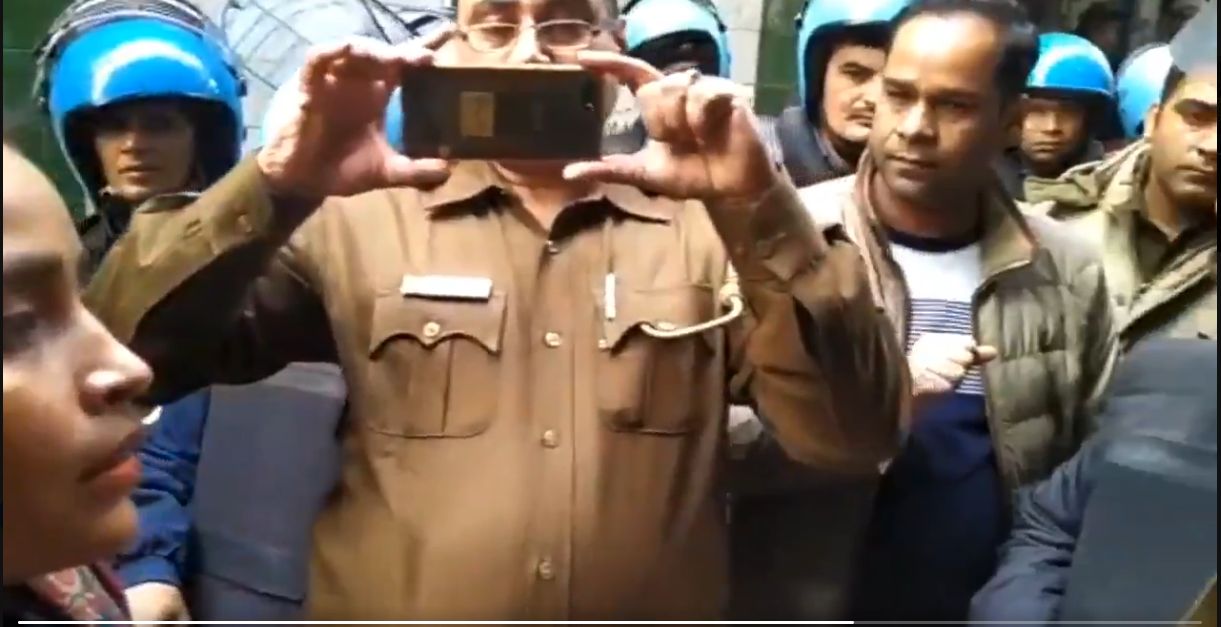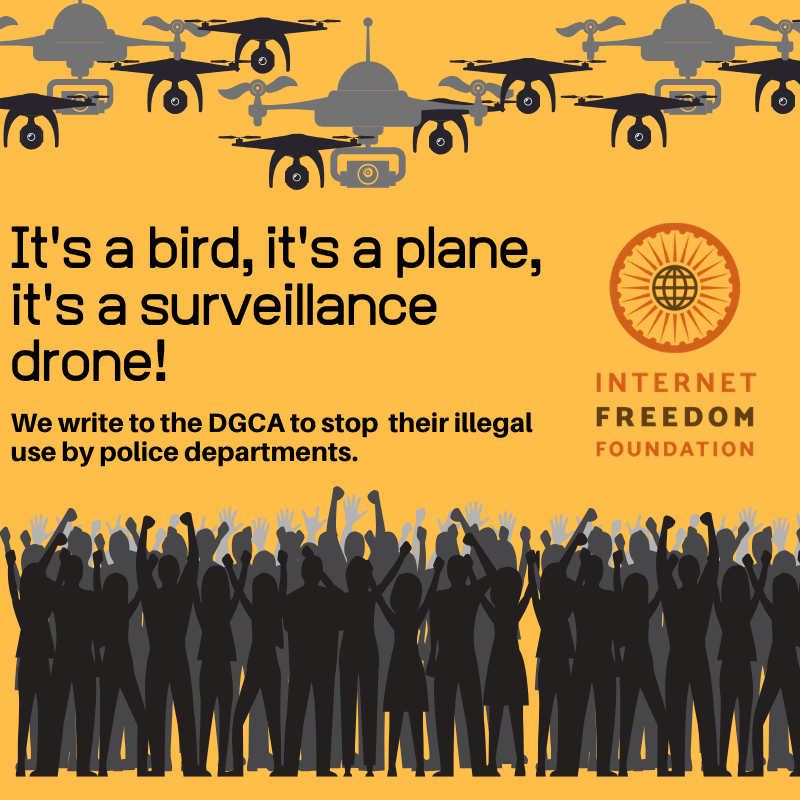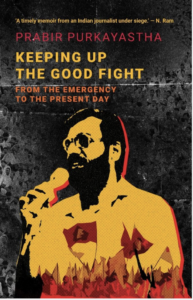
What is the legal basis for drone surveillance and videographing of protestors, asks Geeta Seshu
On January 1, 2020, Delhi police officers recorded a video of an activist participating in the anti-CAA protest rally by women of Seelampur in North-East Delhi. The police officer recorded the exchange between the activist and another senior officer.

Police had stopped the rally, organized between Seelampur-Jaffarabad, at 2.30p.m. citing a violation of Sec 144 which they said was imposed on the area. An activist argued that there was no such notification and demanded to see a copy of the notification.
A tweet from the handle of the women’s group Pinjra Tod said that police and Rapid Action Force (RAF) personnel surrounded the rallyists when they reached the Madina Masjid, demanding to see address proofs and copies of their Aadhar cards.
How can the police make such demands? Or videograph protestors? Which sections of the law allow such record of people?
Clearly, this is not the first time. The surveillance of protestors in the anti–Citizenship Amendment Act (CAA) has gone to illegal and absurd lengths. Police have spread out everywhere to record protestors, photograph and videograph them.
On December 20,2019, there was a rather dramatic protest staged by dalit leader and head of Bhim Army Chandrashekhar ‘Ravan’ Azad on the steps of the Jama Masjid in Delhi. According to reports, Azad had not been given permission to stage a protest but after the Friday prayers, he suddenly appeared amongst the congregation, which was filing out after the prayers.
Slogans against the CAA were raised and there are videos of Azad brandishing a copy of the Indian Constitution and a poster of Dr Babasaheb Ambedkar. Azad managed to give the police the slip and disappeared afterwards.
Police, in anticipation of the protest, had deployed drones to keep track of Azad and of the protestors, apart from closing down metro stations and imposing prohibitory orders under Sec 144 in some areas.

Again, there is absolutely no clear legal basis for the use of such surveillance technology by the police. The drones would have captured not just protestors but just about all those who congregated in the Jama Masjid for the Friday prayers. The drones used for surveillance, as all measures are wont to do, are literally dredgers, sweeping up everyone in its wake.
On December 22 last year, the Madras High Court held a special hearing to allow a rally by the DMK against the CAA. A PIL had ben filed by Varaaki, Founder and President of Indian Makkal Nadram to say that the rally would endanger public life and cause a law and order nuisance. Fortunately, the court rejected the PIL and allowed the rally. Justices S Vaidyanathan and PT Asha maintained that protests could not be stifled in a democratic society. However, the court also said that violence was not permissible and allowed the police to use drones to record any rallies there were held without police permission.
In this rally, police had sought an assurance from the DMK that it would take responsibility in case violence broke out but since no such assurance was forthcoming, permission was denied.
Police justify the use of all manner of prohibitory mechanisms citing the threat of violence, though no violence actually breaks out. Overwhelmingly, the violence we are seeing, whether in Jamia or in Uttar Pradesh, has been by the law enforcers, not protestors across the country.
On December 28, 2019, the Internet Freedom Foundation (IFF) wrote a strong letter to the Director General of Civil Aviation (DGCA), pointing out that the use of drone was illegal and violative of DGCA regulations. Police departments across India were violating the specifications governing the use of drones, the IFF said.

But there are hardly any protections under the law and near-zero awareness of the right to privacy. Even as IFF wrote separate letters to the Union Home Ministry and Delhi Police Commissioner demanding a halt to the use of Automated Facial Recognition System (AFRS), journalist Yogesh Sapkale tweeted about how police in Kalyan railway station, North East of Mumbai, are lining up passengers mostly from Uttar Pradesh, Bihar and West Bengal, and photographing them!

All these acts are highly questionable and legally dubious. They follow no procedure whatsoever. They are inherently intimidatory, violative of the privacy of scores of protestors and result in dangerously excessive profiling. They seek to criminalize those involved in exercising a legal right to protest.


